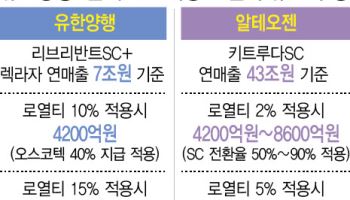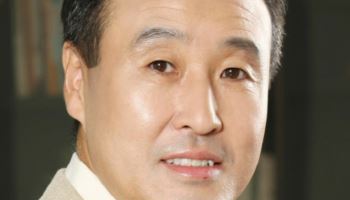How Long Will “Split Listings” Undermine Biotech Trust?
created on 03/20/2025 8:34:49 AM
- [Yoo Sung’s Pharma National Wealth Theory]
Oscotec Gains Prominence as a Leading K-Bio Company Through License-Out Deals
Its out-licensed drug is set for commercialization and poised to become a blockbuster.
Investors criticize Oscotec’s dual listing of its subsidiary, Genosco.
|
This is precisely the case with Oscotec and Genosco. Once an emerging star in K-bio with a record-breaking license-out deal, the companies are now under intense scrutiny and public criticism.
In 2016, the two firms co-developed lazertinib, a treatment for non-small cell lung cancer, which was licensed out to Yuhan Corporation. Two years later, Yuhan further licensed the drug to Janssen, a subsidiary of Johnson & Johnson. Last year, Janssen secured FDA approval for a combination therapy using the drug, bringing Oscotec and Genosco into the spotlight.
The drug is projected to generate approximately KRW 7 trillion ($5.3 billion) in global sales, making it a prime blockbuster candidate. The milestone payments expected from Janssen are estimated to surpass KRW 1 trillion ($760 million). This is, without a doubt, a groundbreaking license-out deal.
However, despite their rising success, Oscotec has come under fire for its recent move to list its subsidiary, Genosco, on the stock market. The company has opted for a controversial strategy known as “split listing” or “dual listing,” where both the parent company and its subsidiary go public separately.
This approach often significantly devalues the parent company’s stock, forcing existing investors to bear substantial losses. As a result, shareholders are voicing strong opposition against Oscotec’s decision.
Oscotec defends its move, arguing that the listing is necessary to secure massive R&D funding for new drug development. However, this rationale has only fueled more resistance. Investors contend that if Genosco lacks research funding, Oscotec flush with cash from its license-out deals should merge with its subsidiary instead. Others suggest that if Oscotec insists on listing Genosco, it should at least distribute Genosco shares to Oscotec shareholders proportionally through a spin-off.
|
Additionally, some investors suspect the listing is designed to transfer wealth to Kim’s son, Kim Sung-yeon, who reportedly holds a 10% stake in Genosco. Kim’s recent remark at an investor meeting that Genosco’s research center might shut down if the listing fails has further aggravated investor frustration.
Split listings invariably dilute share value for existing investors across all industries. In the pharmaceutical and biotech sectors, the negative impact is even more pronounced. Since both the parent and subsidiary share the same drug development business model, there is little to no synergy in listing them separately.
Global pharmaceutical giants like Pfizer operate with around 100 drug pipelines within a single entity, rarely resorting to dual listings. This is because keeping drug development centralized under one company maximizes efficiency and synergies.
Reputation and trust are difficult to build but even harder to maintain. The sooner a company corrects a misguided decision, the better. A company that loses trust faces a perilous existence. A biotech star like Oscotec, which has become synonymous with successful license-out deals, risks damaging not only its own credibility but also the already fragile trust in the broader K-bio sector if it continues down this path of split listings.










![Oncocross Soars on Diversification Hopes, ABL Bio Slides on Trial Data[K-Bio Pulse]](https://image.edaily.co.kr/images/vision/files/NP/S/2025/04/PS25040300289b.jpg)



